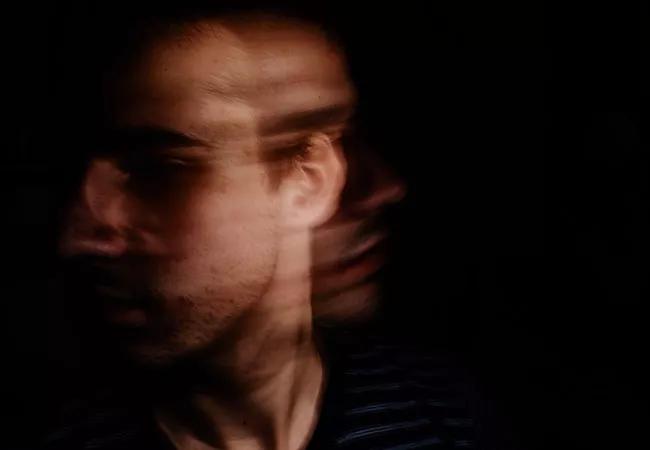Extension study of VMAT2 inhibitor helps confirm a new therapeutic era

Long-term use of deutetrabenazine was found to be safe, efficacious and well tolerated in the treatment of tardive dyskinesia in a multicenter study led by Cleveland Clinic neurologist Hubert Fernandez, MD.
Cleveland Clinic is a non-profit academic medical center. Advertising on our site helps support our mission. We do not endorse non-Cleveland Clinic products or services. Policy
Exposure-adjusted adverse event rates among patients taking the drug for as long as 106 weeks in the open-label extension study were comparable to or lower than those seen in the 12-week, phase 3 trials from which the study participants were recruited.
Deutetrabenazine (Austedo®) was approved by the FDA in August 2017 for treatment of tardive dyskinesia, which is characterized by stiff, twisted or jerky uncontrollable movements related to antipsychotic or antiemetic medication use.
The newly reported extension study, published online by the Journal of Neurology, Neurosurgery & Psychiatry, marks the largest real-world analysis conducted to date of deutetrabenazine’s long-term safety and efficacy.
Dr. Fernandez notes that deutetrabenazine is one of two newly available highly selective vesicular monoamine transporter 2 (VMAT2) inhibitors approved to treat tardive dyskinesia in patients taking antipsychotic drugs for schizophrenia or mood disorders. The VMAT2 inhibitor valbenazine (Ingrezza®) was also approved in 2017. “For the longest time we had no FDA-approved drugs for this disorder,” he says. “Tardive dyskinesia was a disease in the dark.”
While as many as a dozen drugs had been used off-label to treat TD prior to the approval of the VMAT2 inhibitors, none had been clinically validated. “It was the wild, wild west out there,” Dr. Fernandez observes.
Deutetrabenazine is derived from the VMAT2 inhibitor tetrabenazine, which is highly effective against hyperkinetic disorders but has significant, treatment-limiting neuropsychiatric side effects. Researchers found that they could attenuate those effects by adding deuterium, a nontoxic form of hydrogen, to tetrabenazine.
The new open-label, single-arm extension study included 343 patients who successfully completed one of the two pivotal phase 3 trials of deutetrabenazine conducted in the U.S. and Europe; 232 had received the active drug in phase 3 testing and 111 had received placebo.
After a washout period, all patients were started on deutetrabenazine 6 mg twice daily (12 mg/day) with the daily dosage increased by 6 mg each week during the first six weeks until sufficient dyskinesia control with good tolerability was achieved. The maximum dosage was 48 mg/day for most patients and 36 mg/day in those taking the CYP2D6 inhibitors paroxetine, fluoxetine or bupropion.
Patients remained on the drug for up to 106 weeks, with efficacy and safety evaluated during 11 post-baseline clinic visits over the course of the study.
Primary efficacy endpoints were the change from baseline in Abnormal Involuntary Movement Scale (AIMS) score and the share of patients rated “much improved” or “very much improved” on the Clinical Global Impression of Change (CGIC) tool. Exposure-adjusted incidence rates were used to compare adverse event incidences with those reported in the two 12-week phase 3 trials.
Of the 343 patients enrolled in the extension study, 105 (31%) discontinued at some point and 238 (69%) completed the study. All enrollees were included in the drug safety evaluation, and the mean duration of deutetrabenazine treatment was 353 days, with 76% of patients treated for at least 54 weeks and 20% treated for at least 80 weeks.
Among the main findings:
“When we looked at exposure-adjusted incidence rates, we found that they were the same or lower than those reported in the 12-week study,” Dr. Fernandez notes.
He adds that the fact that AIMS score improvements were maintained through the end of the study was also highly notable.
“The takeaway is that we can now treat tardive dyskinesia without needing to adjust or eliminate the antipsychotic or antiemetic medications that cause the condition but which patients very much need for underlying psychiatric disorders,” he concludes.

Real-world claims data and tissue culture studies set the stage for randomized clinical testing

New grant-funded investigation illustrates impact and reach of Cleveland Clinic Brain Study

How the new longitudinal investigation could become the Framingham Heart Study of brain health

Pilot findings show good patient acceptance and safety, early hints of efficacy

Study finds high prevalence of symptoms, willingness to seek treatment

Panel outlines research priorities around a promising alternative to imaging markers

Suspected factors include antithrombotic intensity, time on device, presence of thrombocytopenia

Preclinical studies will assess whether method developed for stroke recovery curbs deficits after brain injury